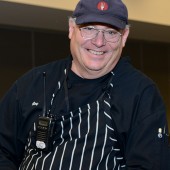“Hurry up—move quickly. Guests arrive in two hours, so just get stuff down. We’ll straighten and fix later.”
“Who set this table? Why is the knife blade turned out and the dessert fork backward? That wine stem is spotted—and that one too! Get them out of here!”
In these situations, you are setting tables twice. Sadly, we’ve all been there and done that, haven’t we? The trick is to take steps to avoid this in the future.
This article is the first of a series focusing on process: meaning how to effectively set tables very quickly but also with a consistent look and less cost involved.
In this issue, we’ll start with the planning phase: before the event.
If you have attended my hands-on sessions at Catersource in Las Vegas, this article is refresher; if not, then you are in for a treat.
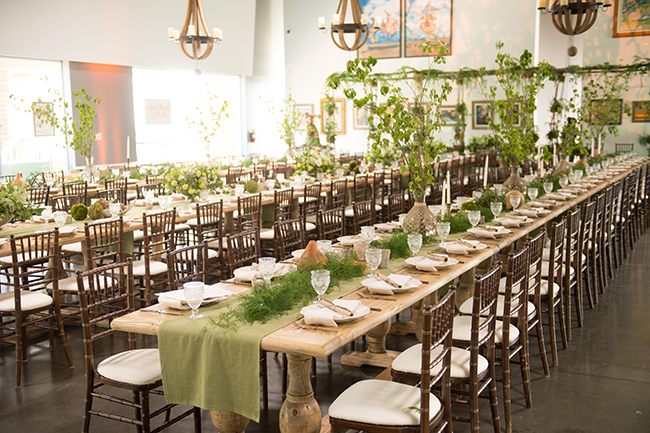
A beautiful tableset from 24 Carrots, Irvine, CA | ©STUDIO EMP inc
Working smarter to reduce the surprises
From across the room you hear, “No, no, no—the tables are to be set differently.” That’s when sweat breaks out and you’re thinking, “We just set tables for 298 covers perfectly, what could possibly be wrong?”
The stressed out planner hired by the client pulls out her cell phone and shows you the napkin fold she wanted. She continues, “Then, place a favor on top of each plate. The menu card goes on top of the napkin but under the favor.” Finally, the zinger: “I have chop plates in my car I want to have set as well.”
If the sales-planning-production staff has done their homework, this is the point where you should say, “So, whom am I invoicing for the extra time, and who going to take the heat because the event is running late?”
Sheer crazy madness. In this case, time and labor resources were not allotted for the unexpected additions.
Often, however, table setting is haphazard. Massive amounts of labor are misused, settings are inconsistent, and work is often performed without the proper compensation. Sometimes what is perceived as revolutionary or a new table design interoperation is actually ignorance or lack of an attention to detail.
For most catering and banquet staffs, the process of table setting is a third world fire drill approach; chaotic, stressful, inconsistent, unorganized, and unfinished tables scattered throughout the dining area, which wastes time due to lack of planning, processes, tools, and insufficient organizational discipline.
You’ll also hear comments such as, “We always did it this way at ‘such and such’ catering” or “We always do it this way.” My usual reply is, “So who is giving you a paycheck for today’s work?”
It’s not hard to set a proper table; provided there is planning, questions are asked and answered, and processes are followed and supervised. With that, the end result a stress-free, streamlined production—akin to finely tuned NASCAR pit crew.
Beginning with the end in mind
First you need to understand what the planner-designer-client has in mind. This needs to be accomplished long before arriving at the event site. The best way is to ask questions. When you are asking questions, you are in charge. Questions demonstrate your experience, interest, and concern, and need to be asked so you understand what resources you will have and who is responsible for them.
Checklist approach
I’m big on checklists for a number of reasons. If you haven’t already, read Checklist Manifesto: How to Get Things Right! by Atul Gawande. A checklist is living document. When something new or a better way comes up, the checklist can be modified.
Of course, not all aspects apply to every event. One event may require a champagne flute, wine glass, and a dessert spoon; while another may need chop sticks, a sake cup, and a fish fork.
Table setting checklist
Define your checklist. Some you write in, some you circle, some you check. Note who has responsibility for each task.
After defining the basics such as event date, client, and location, you can get down to the space itself, what it will contain, and how to accomplish the client’s goal. Here is an example of how I built my checklist.
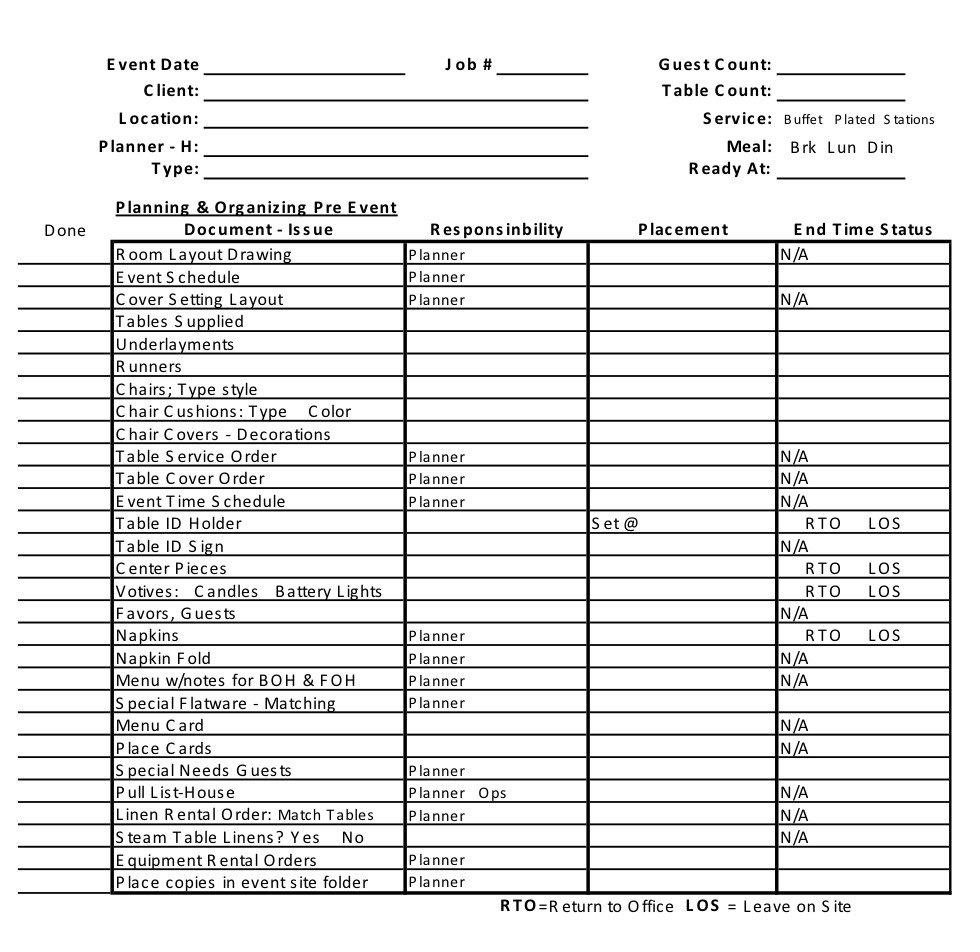
In the meantime, here’s a look at some of the things you should build into your own checklist:
• Event date: The date the event is contracted for.
• Day of week: This helps staff to associate the event date with the day of the week. Often, events run multiple days or have similar names and configurations.
• Job#: The number assigned to the event to track sales, purchase orders, contracts invoicing, change orders, etc.
• Location: Name of the venue and site including address, city, state, zip code, and phone number.
• Planner: Someone on the front end who is the responsible for answering questions and addressing issues. This might be an event producer, a CSR, or an assistant, and may even be handled by an outside consultant. Include cell phone and email contact info.
• Type of event: Wedding, awards dinner, anniversary, bar/bat mitzvah birthday celebration? Put the proper event description on your checklist.
• Guest count: How many guests are contracted for?
• Table count: How many tables were ordered?
• Service: What type? Buffet, plated, stations?
• Meal: Breakfast, lunch, dinner, after party
• Be ready at: What time do the tables need to be set so the photographer, client, bride, etc. can enter the dining area? This is different from guest arrival.
• Responsibility: Who or what organization is responsible for supplying the various items?
• End time status: What time do the guests need to be out of the venue; what time does the staff need to be out?
• Event strike & setting components disposition: what is done with items at the end of the event? LOS (Leave On Site) or RTO (Return To Office).
Area layout drawing
When preparing a drawing indicating the dining area layout, ensure that it indicates the number of tables, the table sizes, and the number of chairs and their locations in the dining area. In addition, consider:
• Is the drawing to scale?
• Is a PDF available for large format printing?
• Is the event inside or outside?
• Also consider the software you are using—is it editable in case of to the plan?
For an inside event:
• Concern is ensuring six-foot spacing between tables, posts, columns, dance floor, exits, as well as fire codes and access for serving staff.
For an outside event:
• Outside concerns are the sun cooking the metal flatware, wind, leaves, and insects in the drinking water, and birds eyeballing tables for target practice.
• Do you have a plan “B” for rain showers or severe wind?
Tip: After the table has been set, take large sheets of mosquito netting and secure the netting to the tables with very large binder clips. The netting keeps leaves, small branches, and insects off the table, and it’s easy to remove before the guests arrive.
Cover setting layout
Get approval of the layout before you set the entire event to avoid having to fix it. We talk about this in more in detail in Part Two.
• Is there a photograph or sketch of the table cover mock up? The table place setting?
• Once the table setting is approved, shoot a picture and distribute as the approved design.
Tip: Assemble a library of cover and setting layouts to assist your clients with decision-making. Ask your favorite rental company to supply you with samples and then photograph table-setting layouts. Number them. Most companies will supply samples at no charge or a nominal fee to be credited toward actual rental.
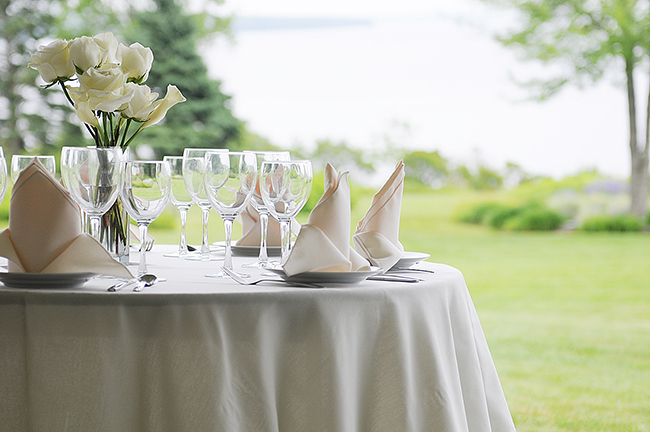
Tableset from Bar Harbor Catering, Bar Harbor, ME | EMILY_RC_PHOTOGRAPHY
Tables
• How many total tables are there?
• Who is supplying the tables?
• How many are dining tables?
• Review the schedule, packing, or rental lists.
• Are tables named and/or numbered?
• What are the table size(s)?
• How many guests at each table? Tip: Packing 12 guests at a 60” round is too tight, eight is best, usually 10.
• How are the tables positioned in the dining area?
• Do the number of tables and their positions conform to local fire code limits?
• Is there six-foot space between the tables for guest and staff access?
Underlayment
Underlayments are pads that protect table surface from heat, moisture, or surface damage. You will usually only see these at nice homes or historical venues. Occasionally, underlayments are also used on buffet tables and counters.
• Are there any required underlayments?
• Which tables will receive them?
• Who is supplying, delivering, and placing them?
• Who is pulling underlayments at the end of the event?
• Will the supplier pick them up from the site? When?
Table linens
• Are all tables to be covered in the same color linen?
• Are certain tables designated certain colors and fabrics?
• Which tables get which colors?
• Are tables draped to the floor?
• Are there any runners or overlays? Note: Sometimes a “base” linen or drape is placed on the table, then another linen or runner of contrasting color or texture is placed on top.
• Who is supplying the linens?
• Will the table linens be left on hangers and/or on a rack?
• Will the supplier place the table linens on the tables?
• What direction do the creases/seams go?
• Who is pulling linens at the end of the event?
• Are mesh linen bags supplied for striking?
• Will the supplier come pick them up from the site? When?
• Or are the lines to be returned to the office? Labeled how?
Linen rental order
• Get a copy of the order placed and check the details. Are there details regarding who to call for assistance, should there be an issue?
• Get a copy of the packing slip and contact details.
• Review the order to check for color, fabric, sizes.
Steam linens?
Will table linens need to be steamed prior to placement? Tip: Bring along a portable steamer and iron, distilled water, and an extension cord just in case.
• Who will do the steaming? How long will it take?
Chairs
Like bread and butter, you can’t have a table without chairs…unless you are serving a particular style that requires pillows or cushions for seating. Make note of that as well. But for the many events that require chairs, here are some considerations:
• Who is supplying the chairs?
• What style?
• What color?
• What material? Metal, wood, plastic?
Chair cushions
• Who is supplying the chair cushions?
• What color are they?
• What is the fabric?
• How are they attached to chairs? Velcro or ties?
Chair covers
Sometimes chairs are covered with elaborate covers.
• Who is supplying the chair covers?
• Who is putting covers on the chairs?
• Who is removing at the end of the event?
• Are bows to be the tied?
• Is there an example of how they are to look?
Table service order
This is a preprinted form or list that details what guest gets what specific meal at each table.
Table cover order
This is a document that details the guest meal totals at each table, and the order in which the tables are served.
Table ID holder & signage
• Could be a stand or picture frame or something else that holds the table name-number identification.
• What stand is to be used?
• Who supplies the stand?
• Who supplies the names and numbers that are placed in the stand?
• Are these designated on the layout drawing or on a list?
• How are table numbers identified? Could be as simple as a number. Could be an elaborate designation such as photographs of cities, wine corks glued together forming a number, etc.
• Designate the position on the table, make it easy for both guest and event staff to locate.
Centerpieces – other decorations
• What do the floral centerpieces look like?
• Who is supplying?
• Who is setting the centerpiece on the tables?
• What is to be done with the floral centerpieces at the end of the event? Collected by the florist or a designer?
• Can guests take home the centerpieces and florals?
Are there other table decorations?
• What is it?
• Who is supplying
• Who will place on the table?
• Disposition at the end of the event?
Candles: open flame or battery operated
• Does the venue allow candles (open flame rule concern)
• Are candles or votives to be placed on the tables?
• Who is providing?
• What do they look like?
• Who is going to place them?
• Who is going to light the candles? Or turn the batteries on? At what time?
• At what time?
• Check the timing: candle tea lights usually last two to three hours; battery operated will usually last a full day.
• Are the candles self-contained or have drip trays?
• Are they scented or non-scented?
• What is to be done with candles or votives at the end of the event?
• Who is supplying delivery, pick up, and transport to and from.
Favors
• Is there a program or favor?
• What is it?
• How big?
• Who is providing?
• Who is placing on the table? Where?
• Can the favor be moved to a table near the exit, so guests can grab on their way out?
Note: Herbs or other potted plants can leave wet mud on tables. Most guests leave perceived centerpieces. Option: place on a separate table near the exit.
• A “thank you, take one” sign or an announcement by the emcee will propel guests toward taking favors.
• Program or other literature for corporate events: place on the chair.
Napkins
• What color, fabric, or texture has been selected?
• Were extra ordered for replacements, such as with a drop or spill?
• Are linen napkins needed for the breadbaskets?
• Are all tables set the same? Specific instructions for alternating colors or types.
• Who is supplying the linen napkins?
• Will the napkins be delivered to the site, and on time?
• Is there a specific placement on the table?
• Is there a specific fold?
• Who is folding?
• Will the table napkins be delivered flat or folded?
• Are mesh linen bags supplied for striking?
• Will the supplier pick up the napkins from the site afterward, and when?
Tip: Get a copy of the order confirmation, packing slip, and contact details and review the order for completeness.
• What size napkin(s) were ordered:
- Lunch 18”x18” or 20”x20”
- Dinner 22”x22” or 24”x24”
- Buffet (to use on lap) 27”x27”
• Quantity ordered?
Napkin fold
• How are the napkins to be folded?
• Are directions or a sample provided based on the correct napkin size?
• Where is the napkin to be placed? Center of the cover? On the side?
Tip: Avoid rolling and stuffing in the water glass.
• Avoid setting the flatware on the napkin, unless outside on a windy day.
• Are napkin rings to be used?
• Who is supplying the ring?
• Where is the ring to be placed on the napkin?
Menu w/notes for BOH & FOH
• Provide a copy of the menu so staff knows what is being served. Sometimes items require special utensils or cutlery.
• Note any gluten-free, vegan, kosher, children’s plates, allergens
• How many courses to be served?
• What are these courses?
• Will champagne or a palate cleanser be served between courses?
Beverage service
Is iced tea to be served? If so,
• Are doilies to be placed under the ice tea glasses?
• Are doilies to be placed under the water goblets?
• Are the doilies custom printed with names, dates, and logos or plain?
• Who is supplying?
• Are iced tea spoons to be placed on the table? Location?
Is wine to be served? If so,
• Is the wine paired with the courses?
• Is there a white wine? To be served when?
• Has special glass been selected? Provide details.
• Is there a red? To be served when?
• Has special glass been selected? Provide details.
Is there a toast? If so,
• Champagne, prosecco, cava, sparkling wine, tequila, or other?
• What time is the toast? (Example: as the guests arrive; after a specific course; after each course)
• Has a special glass; flute, saucer, shot been selected? Provide details.
• Is the toast to be poured prior the guests sitting down or after a course?
Is coffee-tea to be served at the tables or set up at a station? If so,
• If at the table, can a sugar caddy and creamer be preset on the table?
• Are cups and saucers to be placed on the table?
• Can pedestal glasses be used instead of cups and saucers? Tip: Pedestal has a smaller footprint and doesn’t require a saucer. Thus, you also save on handling.
Special flatware
• If sorbet is served between courses, you need another spoon.
• Fish fork, crab/lobster crackers? If another course is added, flatware should match the existing pattern.
Menu Card
• Who is supplying?
• Who is putting on the table?
• Where is it to be placed on the table?
• Is it wrapped or set into the napkin? (See napkin folding)
Place cards
Sometimes place cards are positioned on the dining tables indicating who sits where. Other times, a seating assignment chart is drawn or a list made and the place cards are set on a table outside the dining area or in close proximity. Here are some thoughts:
• Who is supplying the place cards?
• Who is putting the place cards on the table?
• Is there a drawing or chart detailing where each card is to be specifically placed?
• When will they be delivered to the setting team?
• Where is the card to be set? Tip: Etiquette suggests at the top of the setting above the dessert fork and spoon. However, sometimes, it’s on the napkin to the left of the setting.
If the place cards are lined up neatly in alpha order or table order in close proximity to the seating:
• Guests find their own cards and will (in theory) repair to the proper seat and table. However, generally, guests will often lose or misplace the card. There should be a list to consult to help them find them their seat.
Keep in mind: Someone will always want to sit elsewhere.
Tip: If the guests have a preselected choice for a plated meal, it is a good idea to indicate that meal on the card with easily identifiable graphic symbol. This will allow the serving staff to ID what kind of meal goes where.
Keep in mind: Some guests will want to change their meal choice. What is your policy?
Guests with special needs
• Handicapped?
• Children?
• Seniors?
• VIPS?
• Allergies?
• Kosher, Gluten Free, Dairy Free?
• Arriving late?
• Leaving early?
• Where are they seated?
• Are there any other special meals or beverage requirements?
Packing list
The entire packing list doesn’t need to be included. Just include a list of items needed for setting up and completing the dining area table setting; i.e., a work tables, trashcans, polishing cloths.
Equipment rental orders
A copy of orders and confirmations of any rented items concerning the setting of the room.
In the next issue of Catersource magazine
I want you to know I did not generate this content all by myself. For one, I acquired a copy of Bill Hansen’s’ book Off-Premise Catering Management and while reading through I came across other books, white papers, and cogent points offered by experienced professionals and FOH staffs over the years. Next month, I will discuss mise en place for setting tables. See you then!
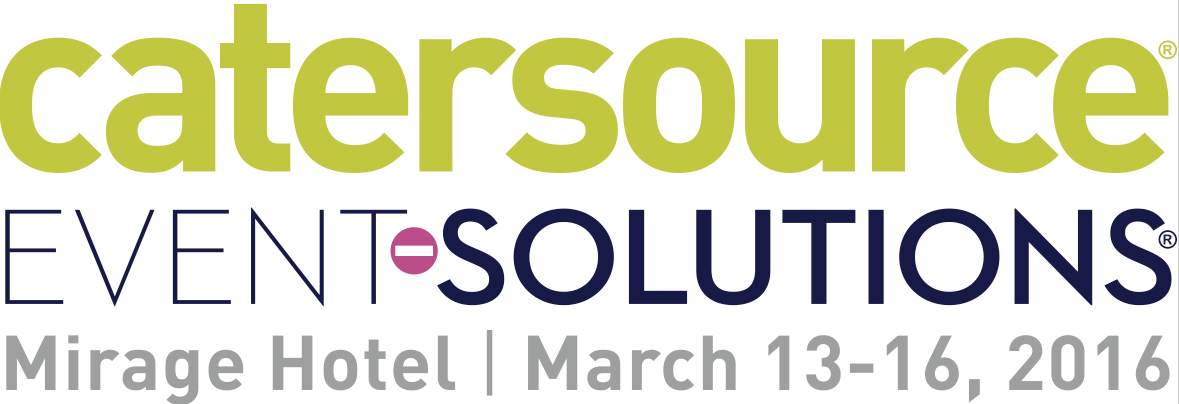
See Roy Porter at CSES2016
Roy Porter will be speaking at CSES2016 in Las Vegas, NV, March 13–16, 2016. Registration is open! Go to conference.catersource.com for more information!


